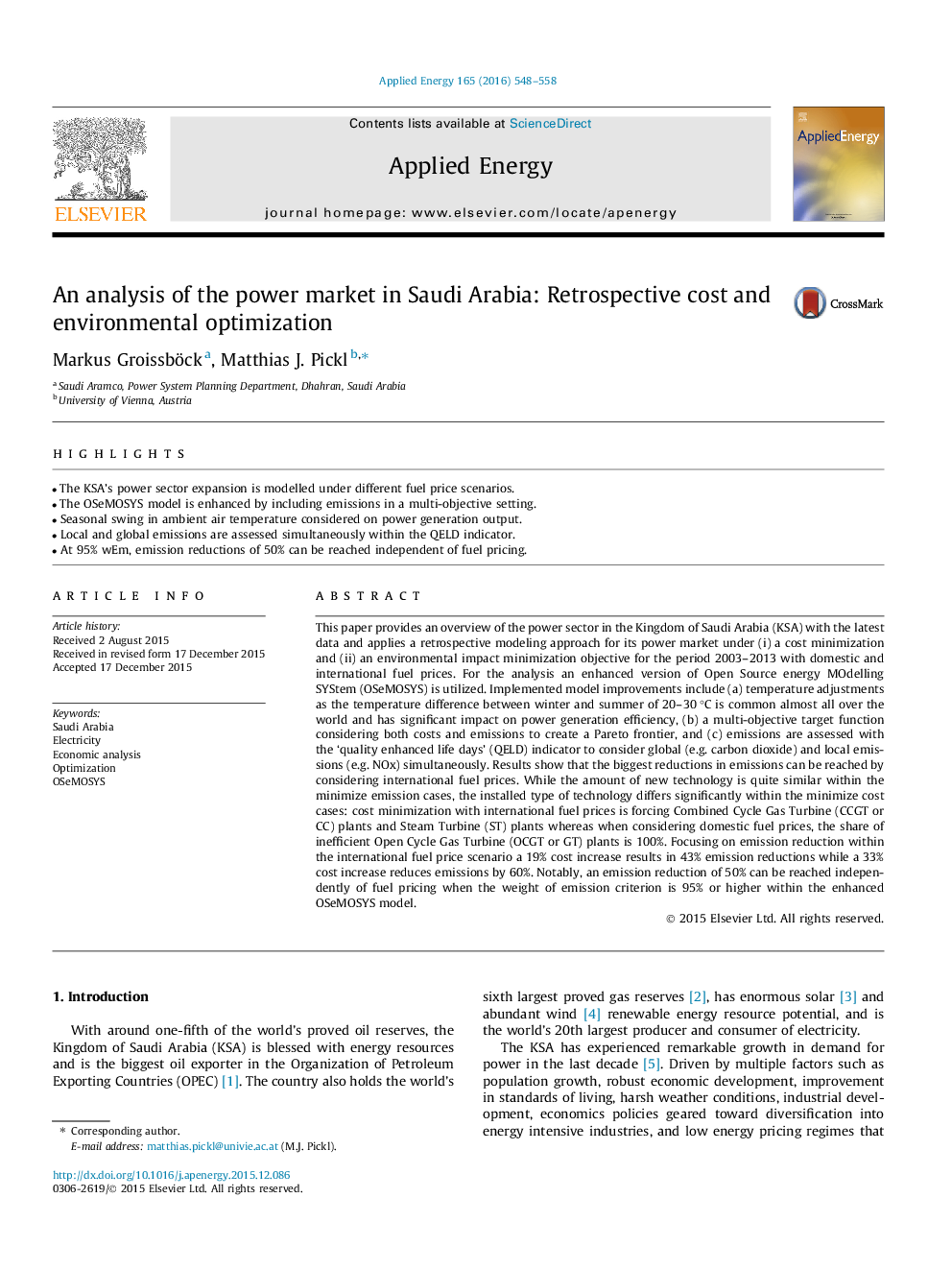| کد مقاله | کد نشریه | سال انتشار | مقاله انگلیسی | نسخه تمام متن |
|---|---|---|---|---|
| 6684024 | 501861 | 2016 | 11 صفحه PDF | دانلود رایگان |
عنوان انگلیسی مقاله ISI
An analysis of the power market in Saudi Arabia: Retrospective cost and environmental optimization
ترجمه فارسی عنوان
تجزیه و تحلیل بازار برق در عربستان سعودی: هزینه های پس انداز و بهینه سازی محیط زیست
دانلود مقاله + سفارش ترجمه
دانلود مقاله ISI انگلیسی
رایگان برای ایرانیان
کلمات کلیدی
موضوعات مرتبط
مهندسی و علوم پایه
مهندسی انرژی
مهندسی انرژی و فناوری های برق
چکیده انگلیسی
This paper provides an overview of the power sector in the Kingdom of Saudi Arabia (KSA) with the latest data and applies a retrospective modeling approach for its power market under (i) a cost minimization and (ii) an environmental impact minimization objective for the period 2003-2013 with domestic and international fuel prices. For the analysis an enhanced version of Open Source energy MOdelling SYStem (OSeMOSYS) is utilized. Implemented model improvements include (a) temperature adjustments as the temperature difference between winter and summer of 20-30 °C is common almost all over the world and has significant impact on power generation efficiency, (b) a multi-objective target function considering both costs and emissions to create a Pareto frontier, and (c) emissions are assessed with the 'quality enhanced life days' (QELD) indicator to consider global (e.g. carbon dioxide) and local emissions (e.g. NOx) simultaneously. Results show that the biggest reductions in emissions can be reached by considering international fuel prices. While the amount of new technology is quite similar within the minimize emission cases, the installed type of technology differs significantly within the minimize cost cases: cost minimization with international fuel prices is forcing Combined Cycle Gas Turbine (CCGT or CC) plants and Steam Turbine (ST) plants whereas when considering domestic fuel prices, the share of inefficient Open Cycle Gas Turbine (OCGT or GT) plants is 100%. Focusing on emission reduction within the international fuel price scenario a 19% cost increase results in 43% emission reductions while a 33% cost increase reduces emissions by 60%. Notably, an emission reduction of 50% can be reached independently of fuel pricing when the weight of emission criterion is 95% or higher within the enhanced OSeMOSYS model.
ناشر
Database: Elsevier - ScienceDirect (ساینس دایرکت)
Journal: Applied Energy - Volume 165, 1 March 2016, Pages 548-558
Journal: Applied Energy - Volume 165, 1 March 2016, Pages 548-558
نویسندگان
Markus Groissböck, Matthias J. Pickl,
